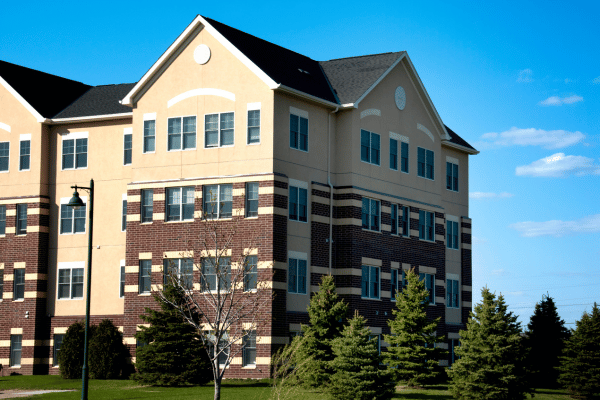
Senior living organizations find themselves on a tightrope, balancing economic shifts, rising costs, and the persistent challenge of staff turnover. In this exploration, we delve into the delicate equilibrium required to maintain margins while achieving sustainable growth.
In this article, we discover how successful care providers are navigating the challenges facing the industry and implementing strategies that go beyond quick fixes, ensuring long-term success and prosperity.
Challenges Facing Senior Living Centers Today

Senior living centers play a crucial role in providing housing, care, and support for the elderly population. As the demographic landscape shifts towards an aging society, these facilities face numerous challenges that impact their ability to deliver high-quality services. In this section, we will explore some of the key challenges confronting senior living centers today.
Financial Strain
One of the most significant challenges facing senior living centers is financial strain. The cost of operating and maintaining these facilities, along with the rising demand for specialized care, places immense pressure on the financial resources of senior living providers.
Many seniors are on fixed incomes, and families often struggle to afford the high costs associated with quality senior care. This financial strain not only affects the sustainability of senior living centers but also raises concerns about the accessibility of these services for a broader segment of the elderly population.
Staffing Shortages
The shortage of qualified and compassionate staff is a critical issue for senior living centers. The demand for skilled caregivers, nurses, and other personnel often exceeds the available workforce.
High turnover rates, burnout, and a lack of specialized training contribute to staffing challenges. Insufficient staffing levels can compromise the quality of care provided to seniors, leading to concerns about their health, safety, and overall well-being.
Technological Integration
Keeping up with technological advancements is a common challenge for many senior living centers. The integration of technology is crucial for improving efficiency, enhancing communication, and ensuring the safety of residents.
However, the adoption of new technologies requires significant investment and staff training. Many senior living facilities struggle to implement and maintain advanced systems, hindering their ability to provide the best possible care and amenities for their residents.
Regulatory Compliance
Senior living centers must navigate a complex web of regulations and compliance standards set by local, state, and federal authorities. Meeting these standards is essential for ensuring the safety and well-being of residents, but the ever-changing regulatory landscape poses a constant challenge. Keeping up with updates, implementing changes, and maintaining compliance can be resource-intensive, diverting time and effort that could otherwise be directed toward improving resident care.
Changing Consumer Expectations
Seniors today have different expectations for their living arrangements and care compared to previous generations. They seek a balance between independence and support, and they often desire amenities that cater to a more active and social lifestyle.
Meeting these changing expectations requires a shift in the traditional model of senior living, presenting a challenge for facilities that may need to adapt their offerings to stay competitive in the market.
Mental Health Concerns
The mental health of seniors is a growing concern within senior living centers. Isolation, loneliness, and the impact of major life transitions can contribute to depression and anxiety among residents.
Addressing the mental health needs of seniors requires a holistic approach that includes social activities, mental stimulation, and access to mental health professionals. Many facilities struggle to provide these resources adequately, leading to an increased focus on mental health within the senior care industry.
Crisis Preparedness
Events such as the COVID-19 pandemic highlighted the importance of crisis preparedness in senior living centers. The need for robust infection control measures, emergency response plans, and effective communication became evident. Facilities that were unprepared faced significant challenges in protecting their residents and staff.
Developing and maintaining comprehensive crisis preparedness plans is an ongoing challenge for senior living centers as they strive to ensure the safety of their communities.
Senior living centers today grapple with a myriad of challenges that encompass financial, staffing, technological, regulatory, and socio-emotional aspects. Successfully navigating these challenges requires a multifaceted approach involving collaboration with stakeholders, strategic planning, and a commitment to providing the highest quality of care for the elderly population.
Solutions to Challenges Facing Center Living Centers Today

As the senior living landscape continues to evolve, addressing these challenges will be essential to meet the diverse needs and expectations of the growing aging demographic.
Economic Shifts and Their Impact
The senior living sector, like many others, is not immune to the impacts of economic shifts. Changes in the economic landscape can lead to shrinking margins, increased costs of goods, and higher staff expenses. To withstand these challenges, providers must adopt a strategic approach that addresses both immediate concerns and long-term sustainability.
Many prominent providers faced the brunt of economic shifts with increasing operational costs. Instead of resorting to quick fixes, senior living centers can undertake a comprehensive analysis of their financial structure. By identifying areas of inefficiency and implementing targeted cost-cutting measures, they can successfully weather the economic storm, demonstrating the importance of a strategic, long-term mindset.
The Rising Costs Conundrum
As costs of goods and services continue to climb, senior living organizations are forced to reevaluate their financial strategies. This is not merely a matter of tightening budgets but demands a nuanced approach that ensures quality care and services while balancing the books.
Rather than compromising on the quality of care, care centers can implement innovative cost-saving measures, such as energy-efficient technology and streamlined operational processes. This not only controls costs but also positions the provider as an industry leader in sustainable, high-quality senior care.
Staff Turnover: The Human Capital Challenge
One of the most significant hurdles for senior living organizations is the high turnover rates among staff. Staff members seeking better benefits and work arrangements can disrupt the continuity of care and impact the overall resident experience. Addressing this issue requires a multifaceted strategy that acknowledges the value of the workforce.
Pinnacle Senior Living tackled the challenge of staff turnover head-on by investing in comprehensive employee benefits, training programs, and creating a positive work environment. This strategic approach not only reduced turnover rates but also enhanced the quality of care, leading to higher resident satisfaction and positive word-of-mouth referrals.
Strategies Beyond Quick Fixes
To maintain margins and foster sustainable growth, senior living providers are increasingly turning to strategies that transcend quick fixes. Implementing technology solutions, refining operational processes, and adopting a holistic approach to resident care are integral components of this long-term vision.
Try the Waypoint Navigator for Free!
If your senior living community is looking to improve its online presence by taking website interactivity to the next level, consider exploring our options here at Waypoint.
Using Waypoint’s Navigator VSA tool, providers we’ve partnered with have realized as much as a 27X ROI on tech investment, converted up to 34% of inquiries to tours, and generated an estimated $1M in sales.
To learn more, contact us today to schedule your free consultation and demo!



